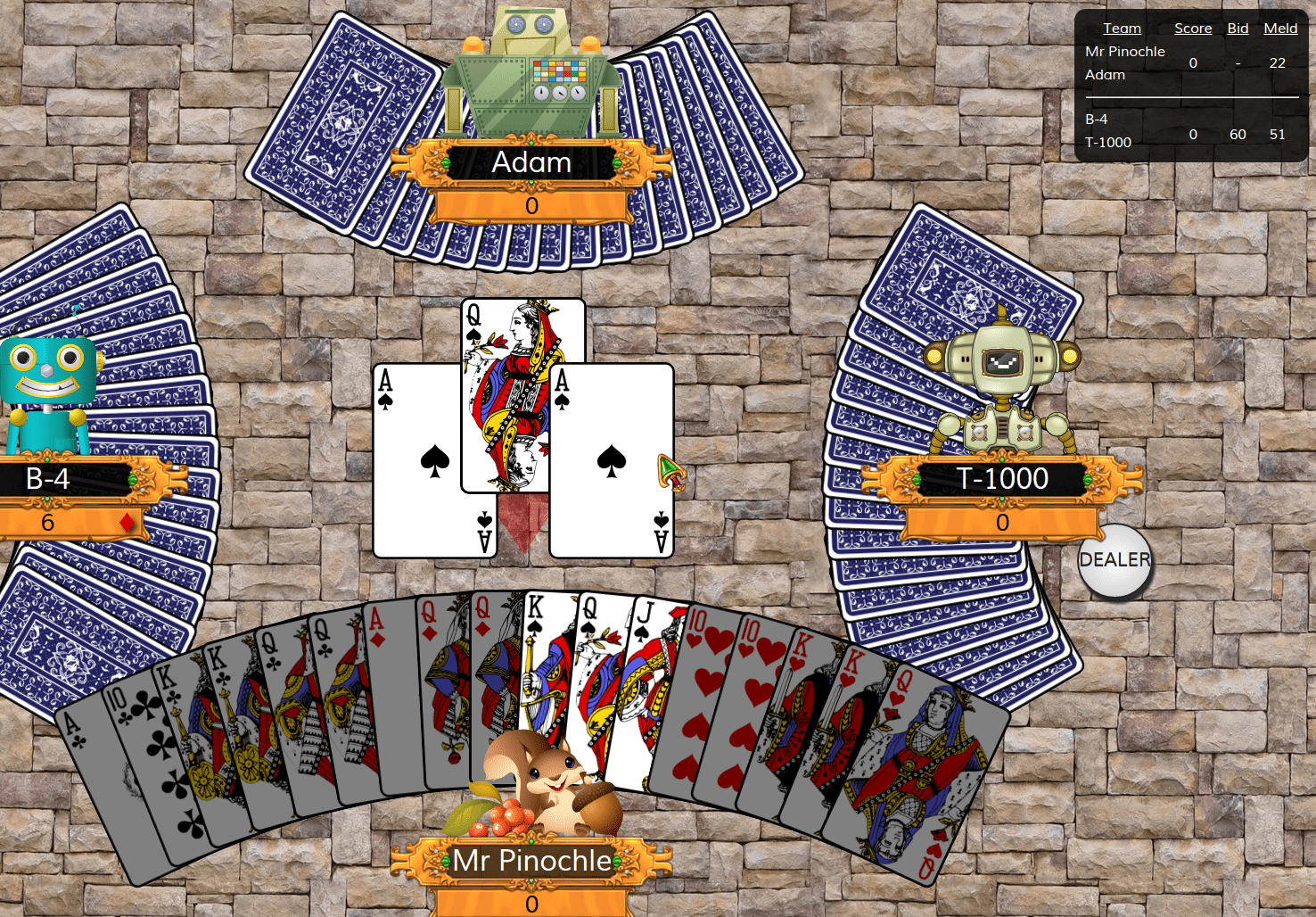Double Deck Pinochle card game strategy and examples
Dive into the world of Double Deck Pinochle with our comprehensive strategy guide, tailored for beginners and seasoned players alike. You'll discover the nuances of meld bidding, ace on ace leadback strategies, and much more. Whether you're new to the game or looking to refine your approach, this page offers insights from a player's perspective, making strategies accessible and actionable.
Ready to put theory into practice? Learn how to play Double Deck Pinochle and play Double Deck Pinochle online today, and embark on your journey to mastering this captivating card game. Let's shuffle up and deal!
Double Deck Pinochle Card Game - The Ace-on-Ace Leadback
April 14 2017
Table of ContentsAce-on-Ace Leadback Signal
An important part of Double Deck Pinochle involves reading your partner's signals. One of the fundamental signals is the "ace-on-ace leadback".
A "leadback" is a signal to your partner when they have the lead - that is, they are the first player to play a card in this trick. They will keep the lead by playing the highest cards - probably aces. At some point, they will run out of aces to play, and so they will probably lose the lead to some other player. They would like to pass the lead to you, so that your opponents don't get a chance to rake in point cards. If you can give your partner a signal, they may be able to play a card which lets you take the lead.
In the screenshot below, B-4 (West) has led with an ace, and their partner T-1000 in the East has followed with an ace. That's usually a bit surprising when it happens.
Most players will not voluntarily waste an ace by sacrificing it in this way. It is better to only play aces in such a way that they win the trick. So when it happens, it is likely that your partner is trying to "tell" you something.- It may be an ace-on-ace leadback. This means that your partner knows for a fact that they have all the remaining aces in that suit. It is an encouragement to play a low card of the suit, so that your teammate can capture the trick using their ace.
- It could mean that your partner had no choice: they only had the ace to play, and no other cards in that suit.
- It could mean that their ace is poorly protected. For example, suppose they only had the ace and a jack. In this case, they played the ace because they just wanted to give you a point card. It's normally a waste to give an ace away as a point card. You can usually get more points by leading with them. So it's less usual that people will play an ace for this reason.
If (1) or (2) are true, then you can pass the lead off to your partner by playing a low card in the leadback ace's suit. To elaborate: (1) If your partner has the remaining aces in that suit, then you can play a low card in that suit, knowing that your left-hand opponent (Adam in the screenshot above) cannot take the trick. (2) And if your partner has no more cards in that suit, then they can play a trump card, and take the lead that way.
So, if your partner plays an ace on the ace that you led, don't ignore it. Lead with a low card in that suit, and you will most likely pass the lead to them. You may want to lead with the king in that suit, if you have one. If you feel confident that your partner will take the trick, you will be giving your partner your own king - a point - by leading it. In addition, your left-hand opponent must play a higher point card - that would be the ten in this case - so your team will very likely get 3 points out of such a trick. If you have no king in that suit, then lead a queen, which will also force your left-hand opponent to play a point card.
Resources
Here are some links to discussions about the ace-on-ace leadback:
- Ace on Ace lead back discussed at Power Pinochle
- Ace on Ace Showing Suit Control discussed at Power Pinochle
- Play: The 2 basic signals at Power Pinochle
There's a fun Double Deck Pinochle tutorial at World of Card Games. You can also find Double Deck Pinochle tips at Pagat.
Video Tutorial of Ace-on-Ace Leadback
This video demonstrates the ace-on-ace leadback in a hand of Double Deck Pinochle.
